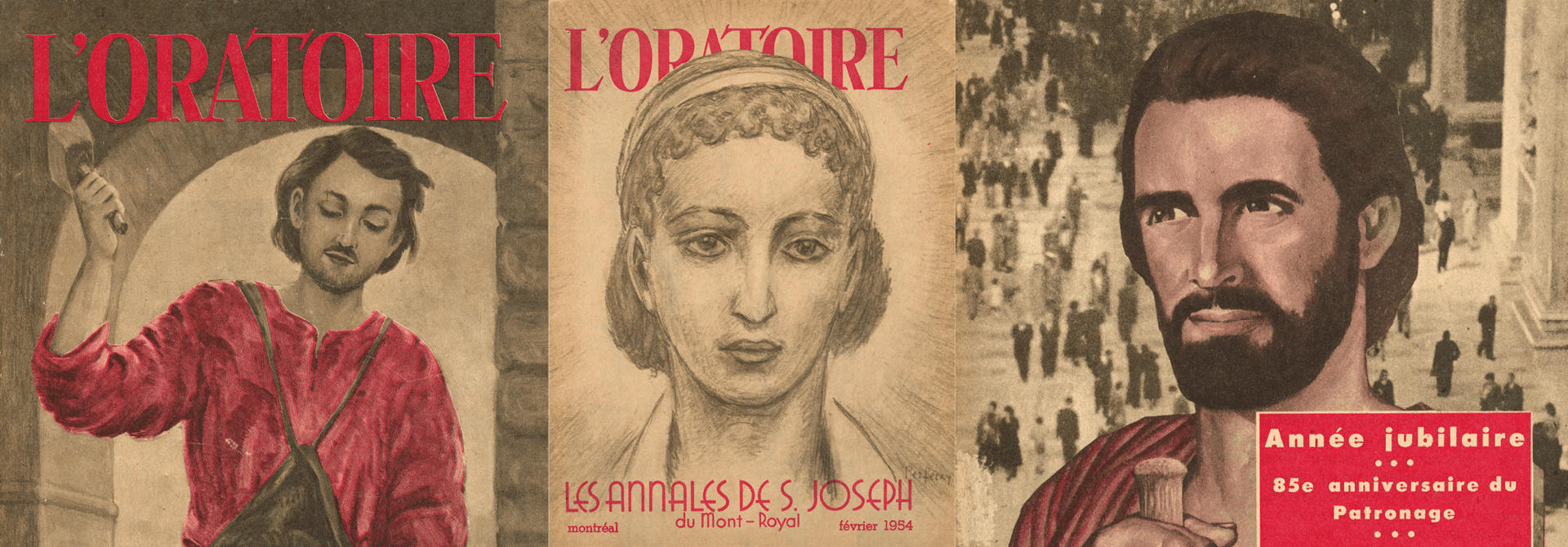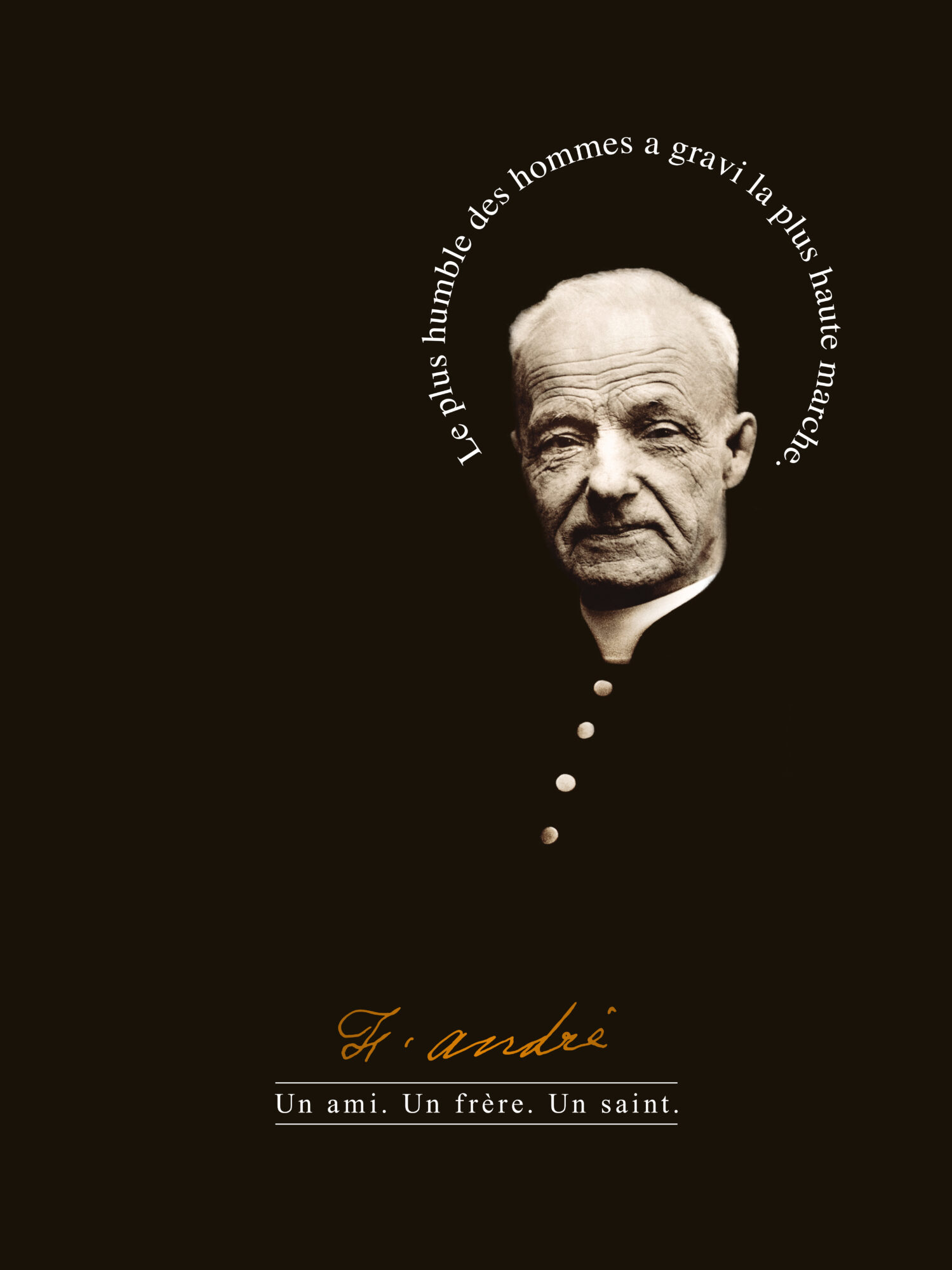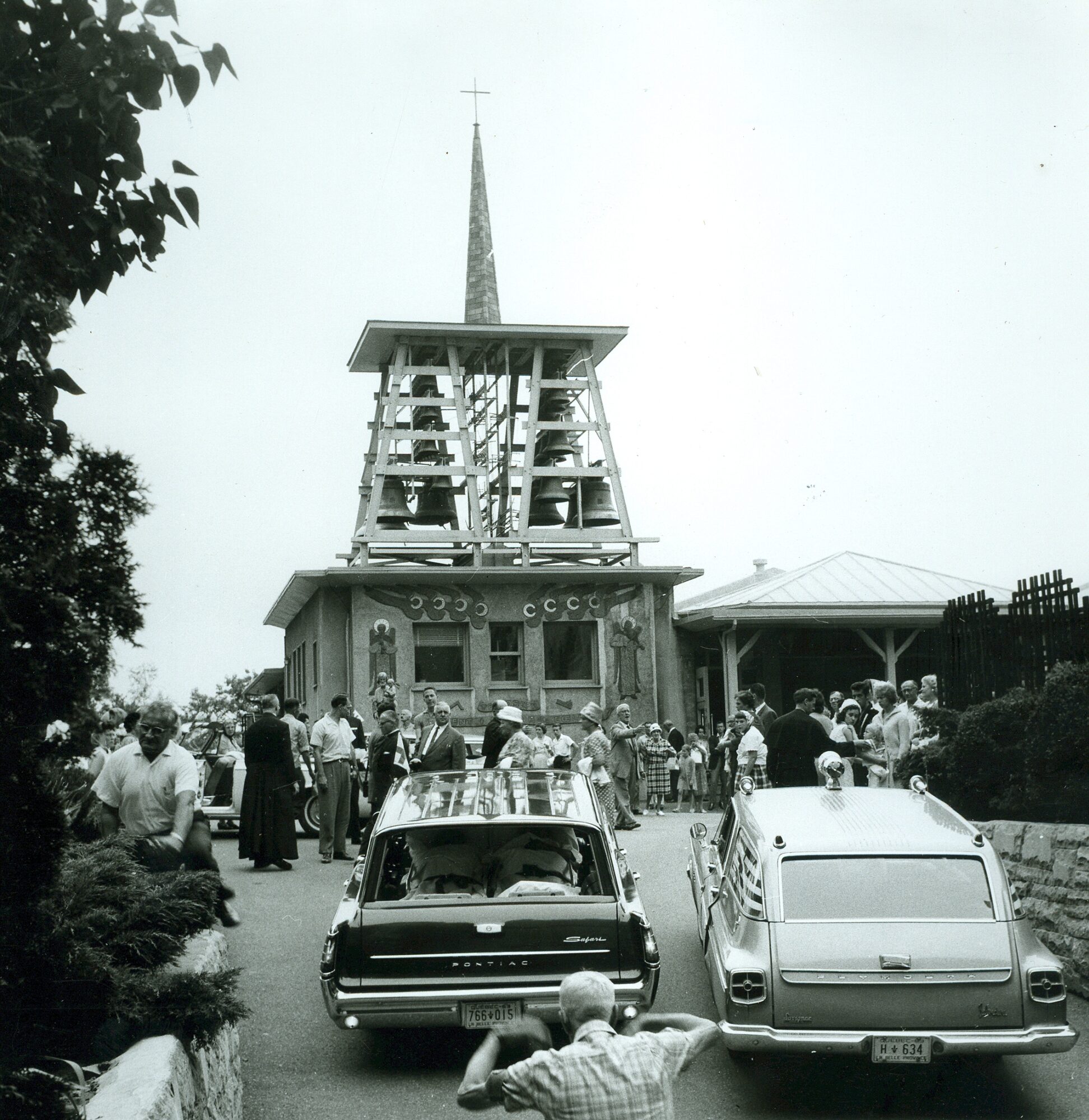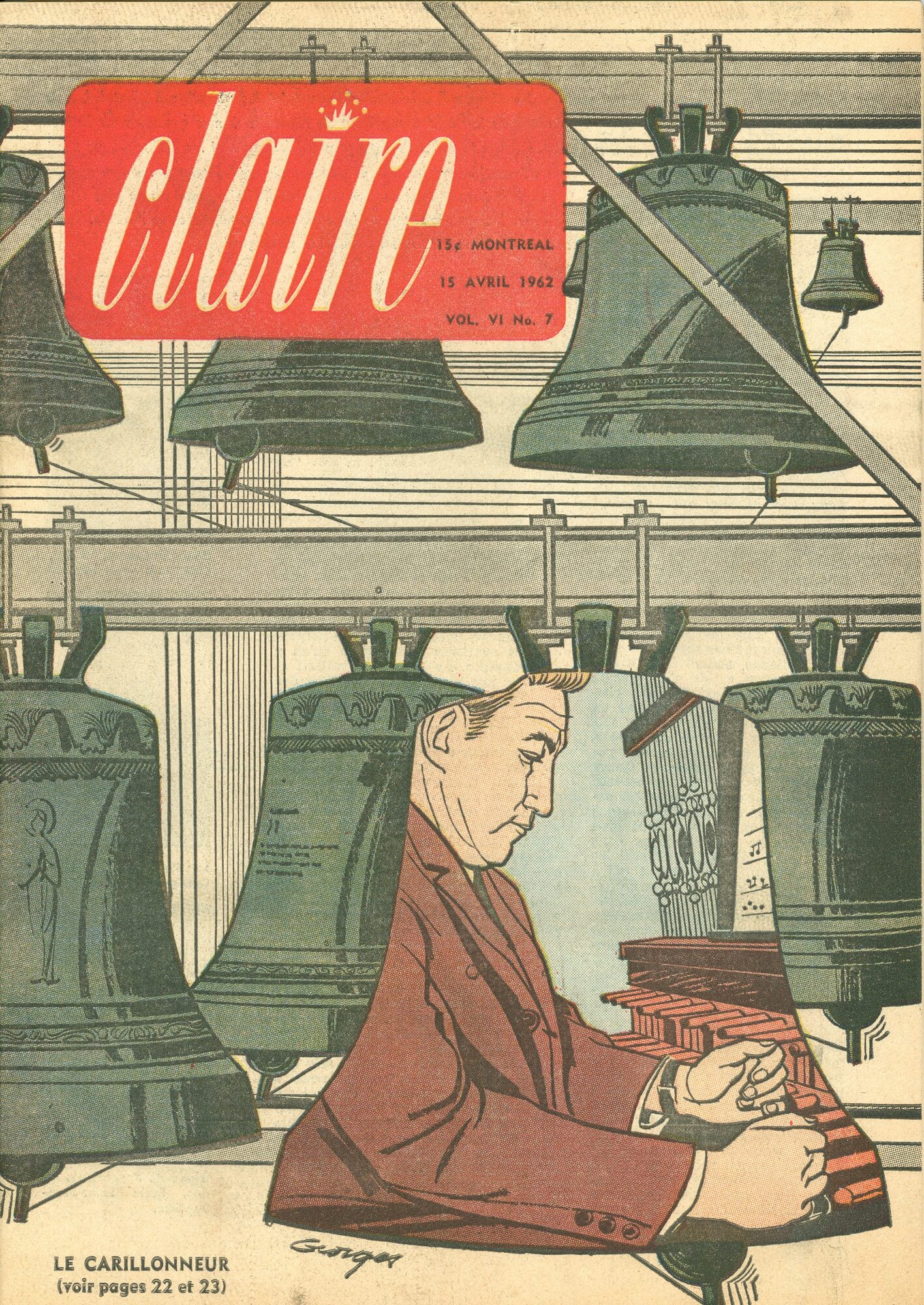A whole adventure was played out in the pages of the magazine L’Oratoire during the year 1954.
Father Émile Legault, CSC (1906-1983). Archives of Saint Joseph’s Oratory of Mount Royal.
Appointed editor-in-chief of the publication in September 1953, Father Émile Legault, CSC, published an editorial in January 1954 in which he declared that “it is time, more than ever, for a crusade for the rejuvenation of Saint Joseph”. Father Legault did not mince his words: speaking of a stage play he was composing on Saint Joseph1, he expressed the desire to “correct the adulterated image” of Joseph, an image inherited from the theatrical plays of the Middle Ages called the Mistères2. The idea of presenting an elderly Saint Joseph was quite simple: to assure the faithful of an absolute faith in the purity of the Virgin. Father Legault showed little sympathy for this image of a “harmless old fool” and “vaguely ridiculous”. The tone was set. The following month, the front page of the magazine, illustrated by the artist Perfecky, presented the portrait of a Saint Joseph no older than twenty years. It is thus indicated that the aim was to make the link between a modern vision of Saint Joseph and his representation that can be seen in the catacombs of the first Christians.
Illustration for the cover of the magazine L’Oratoire, February 1954, by the artist Léonid Perfecky. Archives of Saint Joseph’s Oratory of Mount Royal
A PEACEFUL OBJECTION…
The decision to rejuvenate Saint Joseph aroused reactions, notably from a man named Jean le Pacifique who published several letters in response to Father Legault in the pages of Action Catholique during 1954. For the latter, it was necessary to take into account the ancient tradition and also the apocryphal gospels – the texts that were not retained in the canon of the gospels and letters that make up the New Testament. Moreover, is it not fair to say that we know nothing or very little about Saint Joseph? Father Legault retorted that archaeological excavations in the Christian catacombs are formal as to the representation of a young Joseph in the company of the Holy Family. Also, the Jewish laws at the time of Jesus concerning the age of marriage between two spouses were clearly in favor of marriage at a young age. Now, if Joseph was “righteous” in the sense that he respected the Law of his people, it seems obvious that he would also have respected the teaching of his marriage.
AND ENCOURAGEMENT
Throughout 1954, Father Legault wrote several texts in favor of his campaign. He patiently explained the important points of this rejuvenation cure with an enthusiastic pedagogy, combining humour and a lively writing style. He did not fail to point out that in the Oratory itself, we find in the art dedicated to Saint Joseph this image of a young head of the family: “The marble statue of the high altar in the Crypt church; the statue blessed by Pope Pius X […]; the one in the chapel of ex-votos; the exterior statue signed by the Canadian sculptor Alfred Laliberté; the one in the primitive chapel; all represent a Saint Joseph in the prime of life. […] Saint Joseph was not always fifty years old. It seems to me that he was once 10, 12, 15 years old… “3.
SUPPORTED BY BROTHER ANDRÉ
Saint Brother André, CSC, in front of a statue of Saint Joseph. About 1930, photographer unknown. Archives of Saint Joseph’s Oratory of Mount Royal
Some accuse Father Legault of disregarding tradition and of promoting a distorted image of old age, to the point of denying Brother André. However, Father Legault had the arguments to answer these accusations: “Brother André died in his nineties. Everyone knows that. But he was twenty-seven years old when he was appointed porter at the Collège Notre-Dame, where he was going to build his patient spiritual cathedral to the glory of Saint Joseph. “I am sending you a saint,” the parish priest of Saint-Cesaire had written to the Provincial of Holy Cross. Twenty-seven years. “How did Brother André see Saint Joseph? Young, imagine that, my dear. Young, no more than thirty years old. The statue before which he prayed tirelessly, in the little chapel built by him, is there to testify to this.4 Readers and pilgrims of the Oratory seem to have agreed with Father Legault, so much so that several of the covers of the magazine would feature the image of a young Saint Joseph. When the Jubilee Year dedicated to Saint Joseph opened in 1955, the debate was over. Father Legault could write “Long live the young, beautiful and strong Saint Joseph of Mount Royal”.
Illustration for the cover of the magazine L’Oratoire, February 1954, by the artist Léonid Perfecky. Archives of Saint Joseph’s Oratory of Mount Royal
Illustration of the cover of the magazine L’Oratoire, July 1954. Unidentified artist. Archives of Saint Joseph’s Oratory of Mount Royal
Illustration of the cover of the magazine L’Oratoire, December 1954, by E. Lafflame Archives of Saint Joseph’s Oratory of Mount Royal
__________________________ 1 This is the play Premiers gestes, presented by the theatre group Les Jongleurs de la Montagne. The first performance took place in December 1953, at the time of the formation of the theatre group, and was repeated until 1956. L’Oratoire magazine, March 1954, p.29 2 “Le saint Joseph que j’ai voulu…”, L’Oratoire magazine, January 1954, p.2-3 3 “Il faut frapper le fer...”, L’Oratoire magazine, April 1954, p.21 4 “Jean le Pacifique devient nerveux…”, L’Oratoire magazine, July-August 1954, p.20





